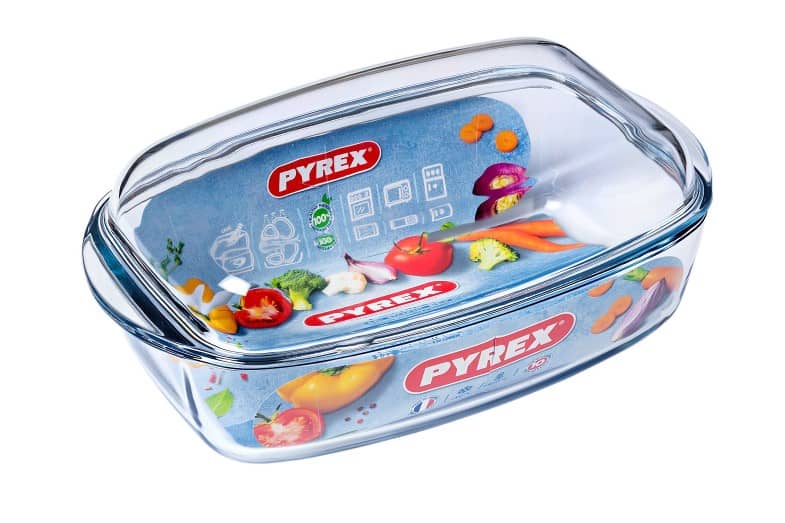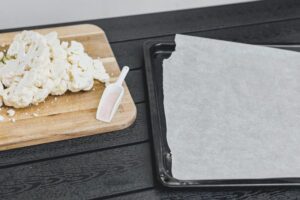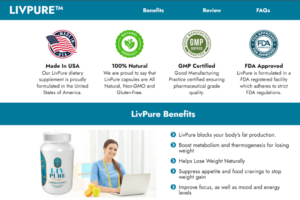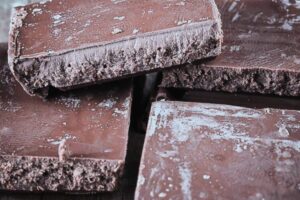Can you put glass in the microwave? Many people use glass for heating food in the microwave, but how safe is it? In this article, I’ll describe whether you can put glass in the microwave without it fracturing or shattering.
Is glass safe to go in the microwave? Glass in itself is generally safe to use when reheating and cooking food in the microwave. It is a stable enough material, like ceramic, which will not seep into the food like some plastics can.
But there are still safety precautions to follow when using glassware in the microwave. It is important to know the type of glass containers you have before using them in the microwave.
Read on to learn more about using glass in the microwave, including Pyrex and other types of glass.
Can You Put Glass in the Microwave?
So to know if glass is safe in the microwave, it is useful to know the different types of glass.
The type of glass for cooking must be as durable as it is safe. Fortunately for the United States, all glass bakeware manufactured and sold are made of tempered glass. The tempering treatment greatly helps the glass vessel keep its structural integrity. And if it breaks in time due to wear and tear, the tempered glass will break into small chunks and not into glass shards.
Types of Glass
1. Natural Glass
Natural glass cookware is generally safe for use in the microwave. You can safely use dishes and cups made with thick glass. The heat will not have much effect on the glass itself. Moreover, you can use that chunky casserole dish you got for Christmas safely in the microwave.
2. Synthetic Glass
Synthetic glass is a glass type made in laboratories to keep up with the demands of industries. These industries often deal with extreme temperatures and dangerous chemicals. So, a material resilient enough for storing nuclear waste can surely withstand radiation from a microwave oven.
Here are two types of synthetic glass used to manufacture the best glassware for home and industrial use:
- Borosilicate Glass – It’s a type of synthetic glass that contains about 15% boron trioxide. This chemical compound is responsible for making glass thermal shock resistant. Simply put, borosilicate glass will not crack under the most extreme temperature changes, unlike regular glass. You can take borosilicate glassware from a freezer and put it in on an oven rack without it shattering.
- Soda-lime Glass – This is the more cost-effective and easily sourced synthetic glass. Moreover, it accounts for 90% of the world’s supply of manufactured glass. You can use soda-lime glass for a wide range of items. These items can be furniture to wine glasses or posh flower vases to windows.
Although it can be relatively durable in normal temperatures, it is not as resilient as borosilicate glass when subjected to drastic temperature shifts. Soda-lime glass expands more than twice as fast when subjected to extreme heat. Thus, it will break easily than borosilicate glass.

PYREX® Vs. Pyrex® – Is There a Difference?
Now you might be thinking, where does Pyrex come into play?
PYREX® is a brand of manufactured glass that has been around American markets since 1915. The PYREX® brand’s long history has gained well-deserved respect. It has become a household name as well–as far as cooking or baking is concerned.
The terms PYREX® and borosilicate glass have been used interchangeably. The reason is that both stood for the quality and durability of manufactured glass. But the Pyrex products of today are no longer exclusively made of borosilicate glass.
Corning Glass Works has licensed out the Pyrex name to two different companies. One exclusively makes the borosilicate glass PYREX®, while the other utilizes soda-lime glass to produce pyrex® products.
So, can you put glass in the microwave – the Pyrex kind of glass? Here’s how to know:
- American-made pyrex® is made of soda-lime glass
- French-made PYREX® is still made of borosilicate glass
Check the logo of the Pyrex product you are buying. If it has the upper case lettering of PYREX, you can be sure it is the safer borosilicate glass. It can be from France or a vintage original Corning Glass Works product.
The vintage Pyrex products from Corning Glass Works and the newer French-made PYREX® are much safer to use in microwave ovens than the American-made pyrex®. It would be best to check the fine print when buying or using glass containers for cooking.
There have been reports of Pyrex products shattering under extreme temperatures. Thus, always take note of the details above to ensure personal safety when using Pyrex cookware and bakeware.
Injury Risks When Using Microwave Ovens
Speaking of injury risks, according to the United States Food and Drug Association (USFDA), most microwave-related injuries are heat-related burns. These burns are from mishandled hot containers, exploding liquids, or overheated foods.
Most of these injuries are not related to the radiation emitted inside the microwave ovens. That is not to say there have been zero cases. Cases of radiation injury resulting from improper servicing or other unusual circumstances are very rare.
Cautionary Tips for Using Microwave Ovens
Microwave ovens are often too convenient for both home and industrial uses. That is why people sometimes forget safety precautions when using microwave ovens. Here are some very useful tips from the USFDA:
1. Read and Follow the Manufacturer’s Usage Manual
All safety precautions and recommended operating procedures are enumerated in the user manual. Some of these precautions include:
- Not heating liquids longer than the manufacturer’s recommendations
- Not turning on the microwave oven when it is empty
2. Use Only Microwave Oven Safe Containers
Can you put glass in the microwave? The glass cookware we discussed in this article, such as borosilicate glassware, can be used in the microwave. But you must not use certain containers, such as metal pans and aluminum foil, as microwaves reflect on them. It can damage the food and the oven itself as a result.
Also, you can’t just use any type of plastic container in the microwave as heated food or liquid can cause them to melt. The USFDA only recommends the use of glass, ceramic, and plastic containers labeled ‘microwave oven safe.’
3. Avoid ‘Super-heated’ Water
‘Super-heated’ means water that is already beyond its boiling temperature but without any visible signs of boiling. There have been cases where people use microwave ovens to heat water in a clean cup beyond its boiling point. As a consequence, it explodes violently at the slightest bit of disturbance to the water. Common reports for this type of incident are serious skin burns and scalding injuries to hands and even faces.
What Is the Maximum Temperature Can a Microwave Reach?
4. Periodically Check for Any Leakage
The FDA recommends checking your microwave oven for any damages to door hinges, including seals or latches. Any of these issues can result in excess microwave radiation leakage. Under any circumstances, it is important not to use a microwave oven with a door that doesn’t seem to close firmly. Avoid using your microwave if it has a warped or bent door or is just generally damaged.
5. Never Use Microwave Ovens That Work with Its Door Open
The USFDA has received multiple reports over the years about microwave ovens that appear to stay on and still function when the door is open. Radiation is not visible to the naked eye. So, we can never be too sure if the magnetron is still generating microwaves at this state.
It is best not to use microwave ovens with this condition. Report it immediately to the manufacturer.

USFDA Cautionary Tips
Glass can really make working in the kitchen easier and fuss-free. However, you must still observe and follow precautions to avoid any inconvenience or injuries. As per the USFDA, although injuries due to microwave radiation are rare, it is not impossible. Also, injuries resulting from mishandling heated food or using faulty equipment are quite common.
To address these issues, the USFDA has come up with the following cautionary tips when using microwave ovens:
- Always follow instructions from the manufacturer.
- Use only microwave-safe containers, such as borosilicate glass bakeware.
- Avoid ‘super-heated’ water.
- Check for leakage on your microwave from time to time.
- Never ever use microwave ovens that operate with the door open.
The USFDA is responsible for ensuring that every microwave oven in the market has met a set of standards that is safe for the public. Immediately report to the manufacturer if your existing product has any damage.
There are governing bodies, such as the USFDA, that certify microwave oven safety. However, it is still up to consumers like us to be extra careful when using this technology. A few extra reminders to using your microwave oven correctly are as follows:
- Give frozen food time to thaw completely at room temperature. Do this before propping food in the microwave oven to reheat.
- No time? Use low power setting in your microwave to help the food thaw out.
- Use pot holders when handling glassware heated in the microwave or risk getting injuries via heat transference.
Can You Put Glass in the Microwave – General Safety Tips
Now you know how to use your microwave oven properly. Next, let’s look at a few reminders when using glassware as containers for reheating or cooking food in the microwave:
- If you want to reheat frozen food in a glass container, allow it to thaw first completely. Also, don’t forget to wipe condensation on the glass pan before microwaving.
- Another option is to prop the frozen container in the microwave and slowly thaw it using low power until it defrosts.
- Do not forget to use potholders when taking out glassware from the microwave. Always use potholders, especially for food that has been heated for a long time. If you use them, you will avoid burn injuries via heat transference.
How Microwave Ovens Work
Inside the microwave oven is a vacuum tube called a magnetron. The magnetron produces waves reflected within the metal interior of the microwave oven. These waves can pass through different types of matter, such as paper, plastic, and glass, but are absorbed by food.
These ‘microwaves’ are a type of electromagnetic radiation. They cause liquid molecules in the food to vibrate and produce the heat that cooks the food. But these waves are the non-ionizing kind of radiation. In other words, they cannot cause changes to human cells, unlike ionizing radiation such as X-rays.
Microwave ovens work by activating radiation waves to heat food thoroughly. These radiation waves act on any liquid first before heating the solid parts. Remember this important bit of info the next time you want to pop a container coming straight out of the freezer.
Conclusion – Can You Put Glass in the Microwave?
So to recap, can you put glass in the microwave? It is very easy to give a resounding ‘yes’ to a seemingly straightforward question. But as we have learned, there is more to this than meets the eye.
So, can glass go in the microwave? Glass is the wiser choice to use in a microwave than regular plastic containers. And it is only right to look into what type of glass you can use. Microwave ovens generate radiation to cook food. Thus, use containers that are resistant to radiation and extreme temperature changes.
1. Natural Glass – This glass is much like ceramic, as it is safe to use in the microwave. Glass bowls and cups made of thick glass are the best natural glass options. Why? Because any changes in temperature will not have much effect on the glass itself.
2. Synthetic Glass – Similar to borosilicate glass, it is the best option when you want dependable, durable, and thermal shock-resistant glassware. PYREX® manufactured in France is the better choice. Some products bearing the Pyrex name are already made of soda-lime glass. Soda-lime cannot withstand extreme pressure. So, it could shatter in the microwave.
Related reading:
How Many Amps Does a Microwave Use? [Microwave Amps]
How to Boil Water in Microwave – Safely – 7 Steps
How Long Does It Take to Boil Water in the Microwave?
Can You Microwave Paper Plates? Is It Safe?
How to Toast a Bagel in the Oven







